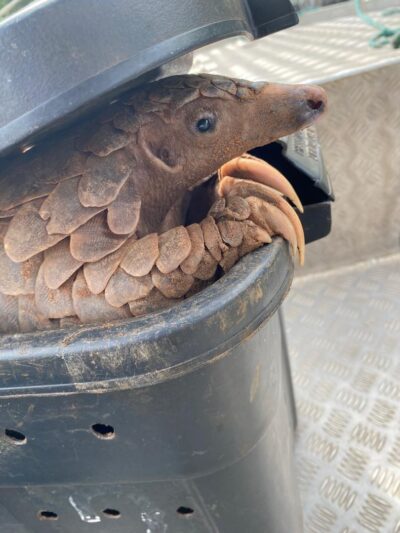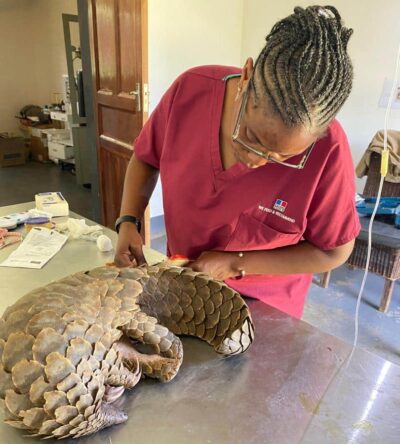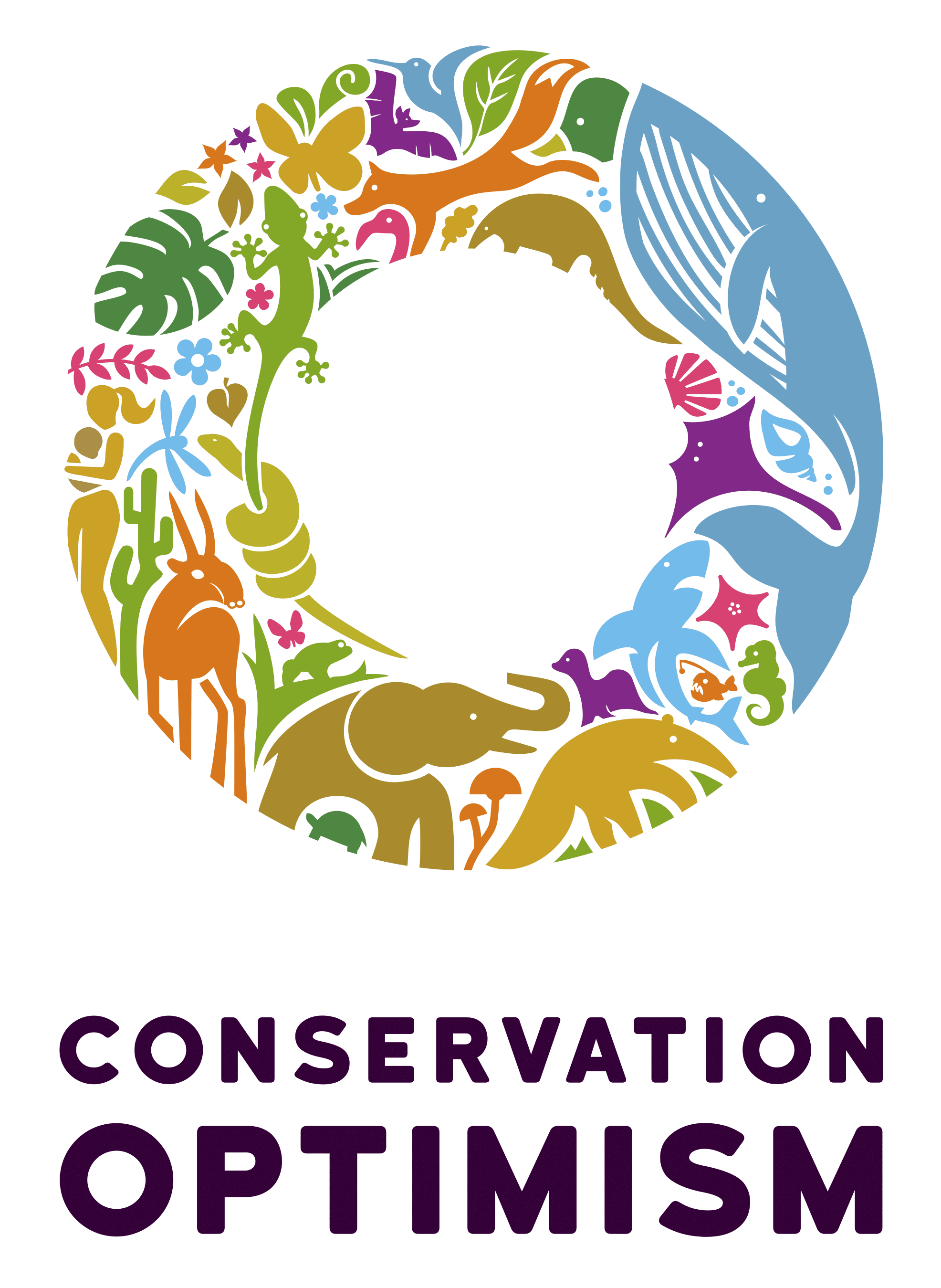If someone asked me what the highlight of my animal science career has been, I would answer without hesitation: working with pangolins. These remarkable animals have deepened my professional curiosity and touched my heart. Every pangolin is full of surprises. Of course, each rescued pangolin comes in with different health status, but also unique feeding preferences, different waking up and sleeping hours, and their own personalities. They’ve shown me how much we must learn and – with all the threats they are facing – how urgently we must act to protect them.
A species in peril
As an animal scientist, I’ve worked at the crossroads of emergency wildlife response, science, and hope. Zambia is home to two pangolin species: the Temminck’s ground and white-bellied tree pangolin, listed as vulnerable and endangered respectivly by the International Union for Conservation of Nature (IUCN). Sadly, Zambia has also become a hotspot for the illegal pangolin trade. These animals are often captured alive, smuggled under horrific conditions, and sold for their scales and meat to meet the demands of local and international markets.
For years, Zambia’s frontline agency, the Department of National Parks and Wildlife (DNPW), seized trafficked pangolins but had limited options for their care. There were no dedicated facilities, protocols, or trained professionals to manage these animals’ complex health and welfare needs after the rescue.
Recognising this gap, Wildlife Crime Prevention (WCP) Zambia was called upon to support government efforts. With support from the Oak Foundation and other donors, a dedicated pangolin rehabilitation centre was established (one of the few of its kind in Southern Africa), providing specialist care to seized pangolins and allowing them time to recover from the trauma and injuries they went through during trafficking.
But our mission didn’t end with rehabilitation. One of the biggest questions in pangolin conservation is, “Can rehabilitated pangolins survive in the wild?” To answer this, WCP, in partnership with Conservation Lower Zambezi (CLZ), DNPW, and with funding from the Pangolin Crisis Fund (PCF), launched a Post-Release Monitoring programme. Our goal was to follow the journey of rehabilitated pangolins after their release into the wild to better understand survival rates, challenges, and behaviour in their natural habitats.

It's true. I'm going home!
(Credit: Zambian Department of National Parks and Wildlife)
Tracking the pangolins
We started small, equipping our first individual pangolins with Very High Frequency (VHF) and satellite tracking devices. Despite the high cost, these tools were critical to gathering real-time data. Our initial pilot was planned to monitor fewer than ten individuals over a year, but PCF saw the potential and extended their support. This allowed us to increase our sample size and run the study for two years. Over this time, we tagged and tracked 14 pangolins. It was a groundbreaking moment for pangolin conservation in Zambia.
Our journey was filled with surprises and learning curves. Working in remote, rugged terrain tested both our technology and our endurance. Pangolins are nocturnal and highly secretive, often spending long hours inside burrows, which interfered with the tracking devices’ signal strength and battery life. On several occasions, when we suspected a pangolin was in distress, we dispatched search teams, sometimes spending hours combing through dense thickets to locate them.

Suwilanji on her way to release a pangolin
(Credit: Zambian Department of National Parks and Wildlife)

Pangolin monitoring
(Credit: Zambian Department of National Parks and Wildlife)

Pangolin monitoring
(Credit: Zambian Department of National Parks and Wildlife)
But every challenge brought new knowledge. We learnt to fine-tune our equipment, adapt our search strategies, and better understand the ecology of these elusive animals. Even when devices failed, our dual tracking systems helped ensure no pangolin was left unmonitored. What we uncovered was inspiring: survival rates of rehabilitated pangolins monitored post-release were 82% at 1 month, 64% at 3 months, 55% at 6 months, and 50% at 12 months.
These numbers may not seem perfect, but they are remarkable in pangolin wildlife rehabilitation. They show that a large majority of the rehabilitated pangolins survive the initial rescue and release process and at least half survive at least one year post-release, even in harsh environmental conditions like drought. Of course there are other factors such as predation that may be outside our control.Globally, pangolin conservationists increasingly consider post-release monitoring a key conservation tool. Similar efforts in countries like South Africa and Vietnam have provided invaluable insights into pangolin movement patterns, habitat preferences, and threats in the wild to improve rehabilitation programmes. However, few African programmes have successfully tracked multiple individuals over extended periods.
Our project has added critical Zambian data to the global pangolin conservation dialogue. It has also provided a collaboration model between government, NGOs, scientists, and funders and reaffirmed that investing in science-led rehabilitation and release can produce tangible conservation gains.
More than just data
Beyond the numbers, what stands out to me most is the transformational power of this work for the pangolins, the conservation sector, and me.
Being part of a team encouraging curiosity and bold thinking has shaped my professional growth. I’ve seen firsthand how a well-supported conservation environment can turn an idea into a pilot and a pilot into a national conservation strategy.
We are now equipped with better tools, stronger partnerships, and more knowledge to refine our protocols, support future releases, and advocate for better protection of pangolins in Zambia and beyond. We plan to scale up our monitoring programme, expand research into pangolin health and behaviour, and train more local vets and rangers in best practices for pangolin care.
Working with pangolins has taught me that every animal saved, every data point collected, and every step tracked in the wild contributes to something greater: the survival of a species and the rewriting of its story from one of crisis to one of hope.

Suwilanji tending to an injured pangolin.
(Credit: Zambian Department of National Parks and Wildlife)


